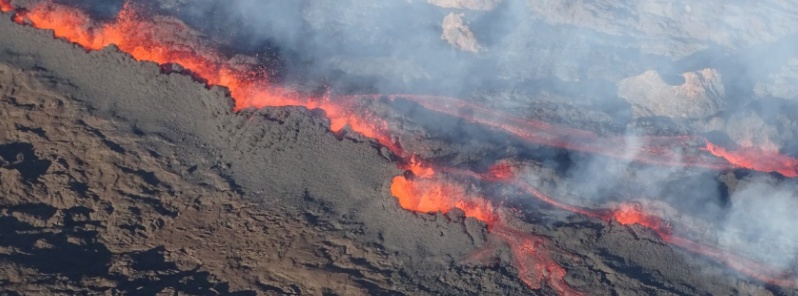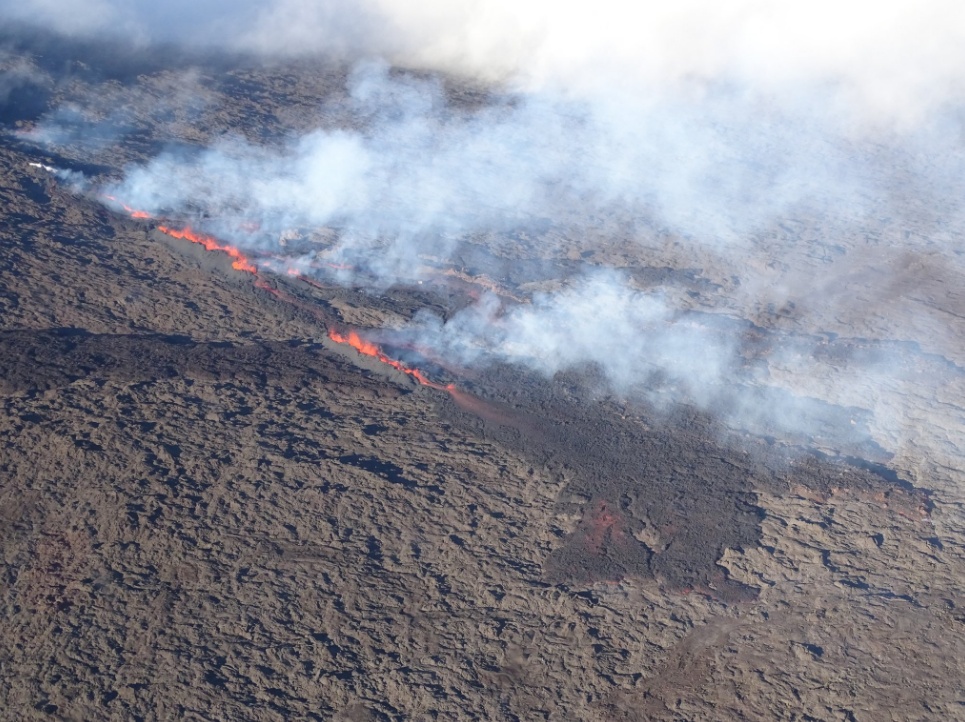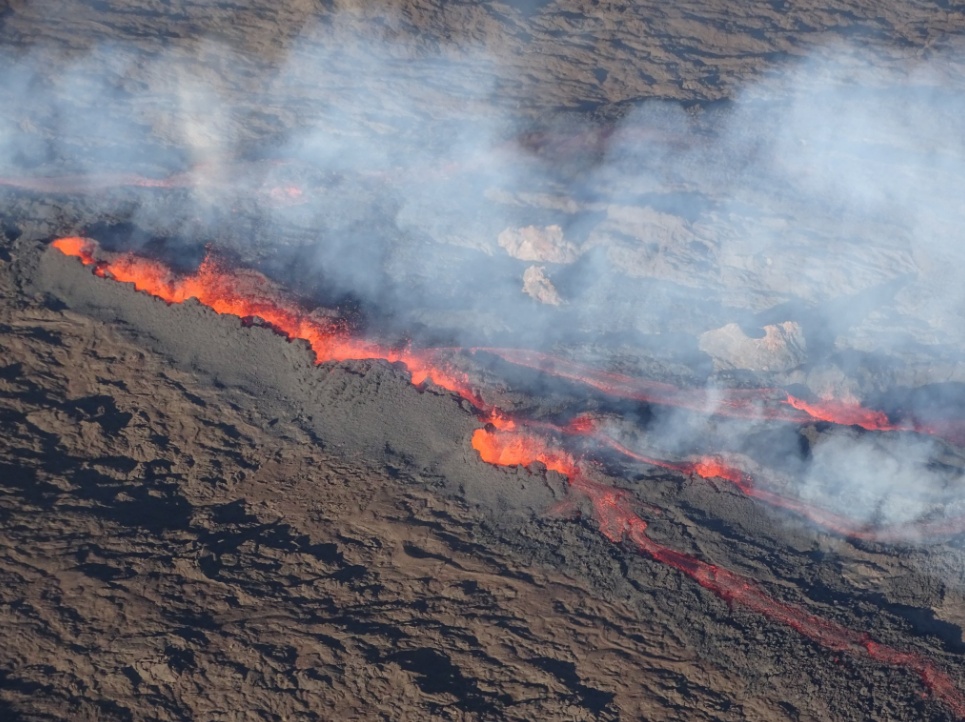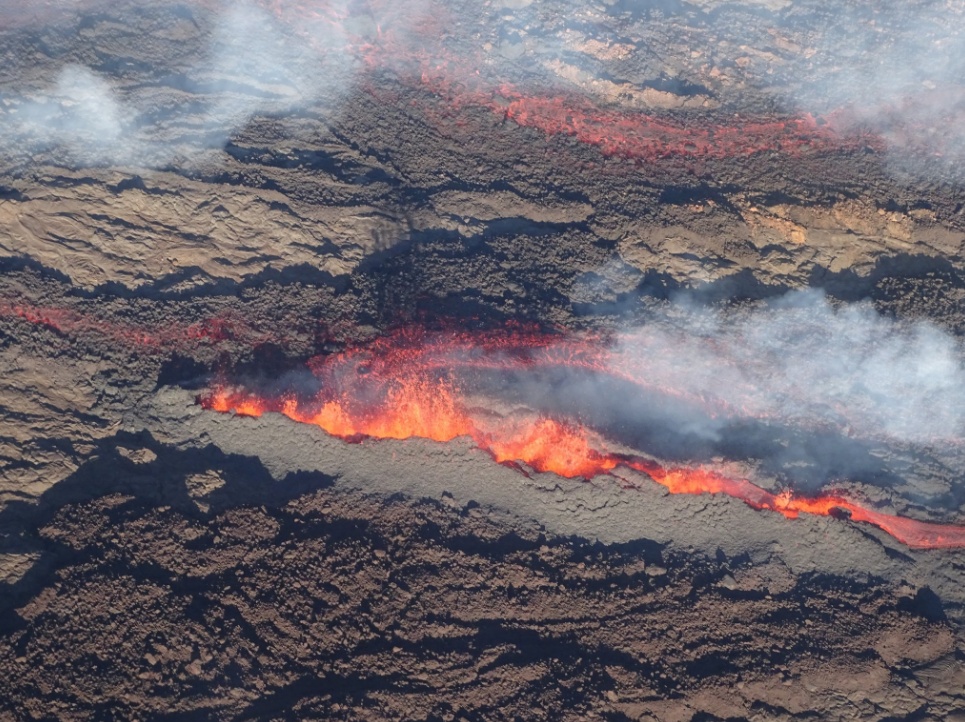New fissure eruption at Piton de la Fournaise, Reunion

A new fissure eruption started at Piton de la Fournaise, shield volcano located on the eastern side of Réunion island in the Indian Ocean. This is its third eruption of the year. The two previous took place in April 2018. The alert level is at 2-2.
The eruption began at 01:30 UTC on July 13, after gradually increasing seismicity registered since 22:00 UTC, July 12.
According to the Piton de la Fournaise Volcano Observatory (OVPF), four fissures, approximately 1 km (0.62 miles) long, opened on the northern flank of the volcano, inside the central caldera of the volcano.

The eruption of Piton de la Fournaise on July 13, 2018. Credit: OVPF
Since this area is uninhabited, the eruption poses no danger for the population.

The Sainte-Rose Coupé trail is currently closed to pedestrian traffic from the Piton Partage because of a real and impending danger of collapse.
Access to the volcano is prohibited until further notice.


Image credit: OVPF


Image credit: OVPF


Image credit: OVPF
#volcan #volcano #PitondelaFournaise Localisation de la nouvelle fissure éruptive/Localisation of the new fissure vent pic.twitter.com/WRJxer63PE
— CultureVolcan (@CultureVolcan) July 13, 2018
Le volcan est en éruption.#Volcan #PitondelaFournaise #laves #coulées #observatoire #eruption #projections #LaReunion #reunionisland #gotoreunion #repost #picoftheday #photooftheday #instagram #instalove #loveit #love #photography #lovely #beautiful #awesome #blogger pic.twitter.com/nh0vGk9Woz
— Sinimalé Freddy (@SinimaleFreddy) July 13, 2018
3ème éruption de l'année (et 16ème en 10 ans) du #PitondelaFournaise à #LaRéunion (#volcan) – Vidéo : https://t.co/XmZO2QMUh6 – Autres articles : https://t.co/FS3FrS92h9 / https://t.co/VKgXdYXQ30 – Suivi : https://t.co/CHl7w0okyU pic.twitter.com/JtzqxS3BQb
— Météo Villes (@Meteovilles) July 13, 2018
Update
July 14, 12:17 UTC
The eruption stopped at 22:00 local time on July 13.
Lava flow erased the Rosemont Chapel site, listen since the 18th century in writings describing the first expeditions in the Enclos.
Geological summary
The massive Piton de la Fournaise basaltic shield volcano on the French island of Réunion in the western Indian Ocean is one of the world's most active volcanoes. Much of its more than 530 000-year history overlapped with eruptions of the deeply dissected Piton des Neiges shield volcano to the NW.
Three calderas formed at about 250 000, 65 000, and less than 5 000 years ago by progressive eastward slumping of the volcano. Numerous pyroclastic cones dot the floor of the calderas and their outer flanks.
Most historical eruptions have originated from the summit and flanks of Dolomieu, a 400-m-high (1 312 feet) lava shield that has grown within the youngest caldera, which is 8 km (26 247 feet) wide and breached to below sea level on the eastern side.
More than 150 eruptions, most of which have produced fluid basaltic lava flows, have occurred since the 17th century. Only six eruptions, in 1708, 1774, 1776, 1800, 1977, and 1986, have originated from fissures on the outer flanks of the caldera. The Piton de la Fournaise Volcano Observatory, one of several operated by the Institut de Physique du Globe de Paris (IPGP), monitors this very active volcano. (GVP)
Featured image credit: OVPF

Commenting rules and guidelines
We value the thoughts and opinions of our readers and welcome healthy discussions on our website. In order to maintain a respectful and positive community, we ask that all commenters follow these rules:
We reserve the right to remove any comments that violate these rules. By commenting on our website, you agree to abide by these guidelines. Thank you for helping to create a positive and welcoming environment for all.